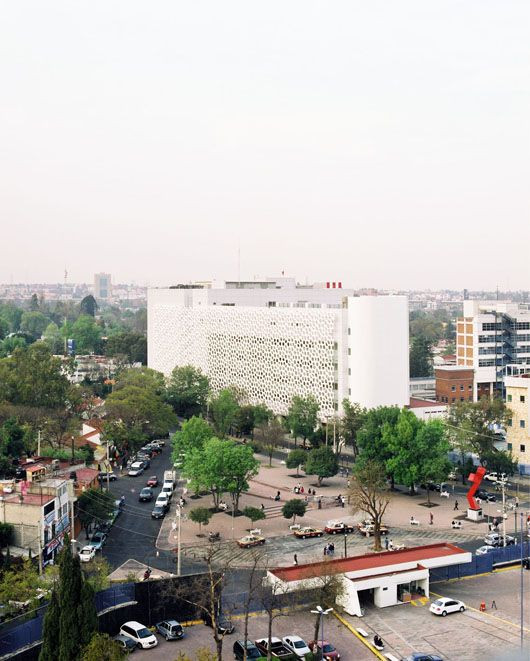Mexico City Hospital 'Eats' Pollution: Torre de Especialidades Features Innovate Facade Tiling That Neutralizes Smog

About 20 years ago, the United Nations identified Mexico City as the single most polluted city on the planet. Air pollution remains a pressing concern for the city’s public health officials, and the problem has yielded some truly striking innovations in recent years, the latest of which is a building that “captures” smog.
A new hospital building in Mexico City, the Torre de Especialidades, is designed to transform air pollutants into harmless chemicals. The building has a facade made up of a new type of tile called “proSolve370e,” which, according to its inventors, the Berlin-based design firm Elegant Embellishments, can neutralize the chemicals produced by 8,750 cars every day.
In 1992, Mexico City’s levels of sulphur dioxide, suspended particulate matter, carbon monoxide, ozone, lead, and nitrogen dioxide all exceeded the World Health Organization’s health protection guidelines. At the time, researchers hypothesized that the pollution was causing about 35,000 hospitalizations and 1,000 deaths every year. It’s generally thought that Mexico City’s pollution problems stem from an unfortunate combination of an explosion in industrialization, layout (which includes many far-flung neighborhoods), and geography (the high altitude and encircling mountains trap the polluted air as though in a bowl). The city is filled with old cars belching dangerous fumes.

The new building will help stymie a small fraction of that pollution. The key to the smog-fighting powers of the hospital building's façade is in its paint, made from a titanium dioxide-based pigment. According to the designers, when ultraviolet rays of sunlight reach the titanium dioxide on the tiles, it triggers a chemical reaction between the titles and the smog in the air (mono-nitrogen oxides). The end result? The smog breaks down into safer chemicals, such as water, carbon dioxide, and calcium nitrate.
In addition, the innovative lattice-like design of the tile shapes “slow wind speeds and create turbulence, for better distribution of pollutants across the active surfaces,” said Elegant Embellishments co-founder Alison Drin, according to Fast Company. “The omni-directionality of the quasicrystalline geometry is especially suitable to catch things from all directions.” The design has additional environmental benefits, as well. “The façade produces shadows in the inside of the building, helping to keep it fresh and cool,” said Josue Hoil Basto, who works for Ingenieros Civiles Asociados, the construction firm that built the innovative building. “That way the amount of air conditioning needed to cool it is kept at it’s lowest possible level, helping save electric energy.”

The Torre de Especialidades is an addition to the Hospital Manuel Gea Gonzales, located in the southern Tlalpan neighborhood of Mexico City. The tower was built as part of an ongoing $20 billion government project to improve the city’s health infrastructure.
Published by Medicaldaily.com



























